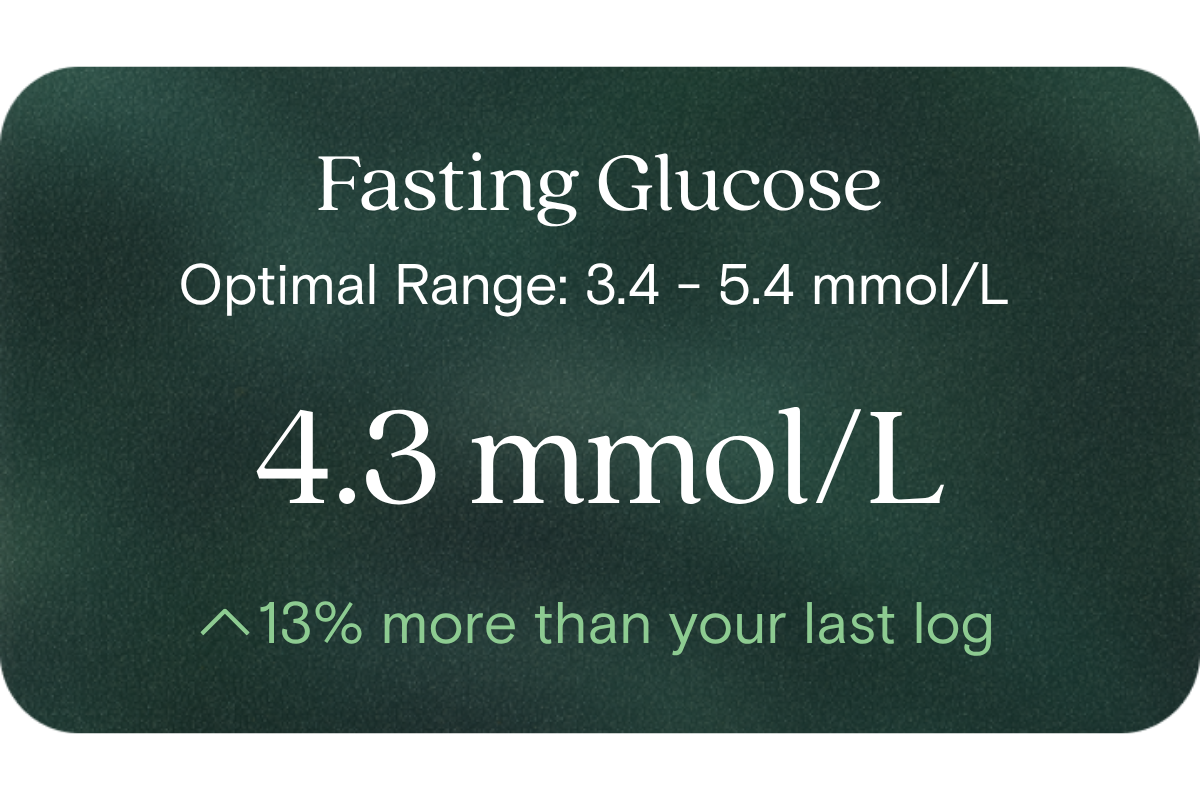What is fasting glucose?
Fasting glucose is the concentration of sugar in your blood after an overnight fast. It helps measure how efficiently your body uses and regulates energy when not eating.
Why does it matter for long-term health and wellbeing?
Balanced fasting glucose supports stable energy, focus, and metabolic health. When glucose levels remain within the optimal range, it reflects efficient energy management and a lower risk of long-term metabolic imbalance.
What’s an optimal level of fasting glucose?
- Lab reference range: 3.4–5.4 mmol/L
- Optimal range: Generally at the lower end of the reference range, while maintaining consistent daily energy levels.
What influences fasting glucose levels?
Fasting glucose can fluctuate depending on diet, physical activity, stress, sleep quality, hydration, and recent exercise. Hormonal balance and timing of meals also play a role in how efficiently glucose is regulated.
What does it mean if fasting glucose is outside the optimal range?
If fasting glucose trends higher than optimal, it may suggest your body is finding it harder to manage energy from food efficiently. Low readings may occur after intense activity or fasting for too long. Regular monitoring helps you understand your unique pattern and make small, targeted lifestyle adjustments.
How can I support healthy fasting glucose levels?
Focus on balanced meals rich in fibre and protein, consistent physical activity, quality sleep, and effective stress management. Tracking your fasting glucose through regular blood testing and wearable insights can help fine-tune what works best for your metabolism.
This information is provided for general health and wellness purposes only and does not replace medical advice.
References
- Royal College of Pathologists of Australasia (RCPA). (2025). Glucose. RCPA Manual.
- Pathology Tests Explained (RCPA/Stakeholder project). (2024). Glucose.
- Healthdirect Australia. (2024). Blood glucose test.
- Monash Pathology. (2024). Reference Intervals Master List (GLUCOSE – FASTING, plasma: 3.0–6.0 mmol/L).




















.png)
